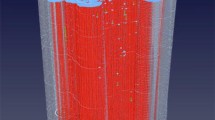Abstract
The synchrotron and free electron laser light sources, large scientific user facilities, are in the position to help solve some of the most challenging and novel scientific questions facing the world, ranging from the design of new materials to manipulate classical and quantum information with high fidelity and ultra low power consumption, to enabling systems for efficient energy storage, transportation, and conversion that will drive the emerging economy based on renewable energy, to understanding the structure and motion of protein molecules to enable individualized medicine. These scientific opportunities will be addressed by new measurement techniques, technological advances in detectors, multi-modal data utilization, and advances in data analysis algorithms, all of which are being driven to a new level of sophistication. Over the next decade, it is estimated that the US light sources will generate in the exabyte (EB) range of data, require tens to 1,000 PFLOPS of peak on-demand computing resources, and utilize billions of core hours per year. Scientific discovery on this scale will be enabled by data management and workflow tools that integrate user facility instruments with sufficient computing, networking, and storage resources, on-demand utilization of super-computing environments to enable real-time data processing, real-time data analysis capabilities to significantly reduce data volumes and provide feedback during experiments to improve data quality and to drive the direction of ongoing measurements, the application of advanced machine learning algorithms to make crucial experiment decisions, and the integration of simulations and model-based approaches to facilitate automated experiment design and steering of data collection.
Access this chapter
Tax calculation will be finalised at checkout
Purchases are for personal use only
Similar content being viewed by others
References
U.S Department of Energy, Office of Science, Basic Energy Sciences, User Facilities. https://science.osti.gov/bes/suf/User-Facilities
Soft X-ray Science Opportunities Using Diffraction-Limited Storage Rings. https://als.lbl.gov/wp-content/uploads/2016/09/sxr_workshop_report.pdf
The Advanced Photon Source Strategic Plan. https://www.aps.anl.gov/The-Advanced-Photon-Source-Strategic-Plan
Early Science at the Upgraded Advanced Photon Source. https://www.aps.anl.gov/files/APS-Uploads/Aps-Upgrade/Beamlines/APS-U%20Early-Science-103015-FINAL.pdf
New Science Opportunities Enabled by LCLS-II X-ray Lasers. https://portal.slac.stanford.edu/sites/lcls_public/Documents/LCLS-IIScienceOpportunities_final.pdf
Thayer, J., et al.: Data processing at the linac coherent light source. In: IEEE/ACM 1st Annual Workshop on Large-scale Experiment-in-the-Loop Computing (XLOOP), Denver, CO, USA, pp. 32–37 (2019)
National Synchrotron Light Source II Strategic Plan. https://www.bnl.gov/ps/docs/pdf/NSLS2-Strategic-Plan.pdf
Hill, J., et al.: Future trends in synchrotron science at NSLS-II. J. Phys. Condens. Matter 32(37), 374008 (2020)
Stanford Synchrotron Radiation Lightsource Strategic Plan: 2019–2023. https://www-ssrl.slac.stanford.edu/content/sites/default/files/documents/ssrl_strategic_plan_2019-2023.pdf
Allan, D., Caswell, T., Campbell, S., Rakitin, M.: Bluesky’s ahead: a multi-facility collaboration for an a la carte software project for data acquisition and management. Synchrotron Radiat. News 32(3), 19–22 (2019)
Bluesky Project website. https://blueskyproject.io
Experimental Physics and Industrial Control System. https://epics-controls.org
Pandolfi, R.J., et al.: XI-CAM: a versatile interface for data visualization and analysis. J. Synchrotron Radiat. 25, 1261–1270 (2018)
Gursoy, D., De Carlo, F., Xiao, X., Jacobsen, C.: TomoPy: a framework for the analysis of synchrotron tomographic data. J. Synchrotron Radiat. 21(5), 1188–1193 (2014)
Khan, F., Narayanan, S., Sersted, R., Schwarz, N., Sandy, A.: Distributed X-ray photon correlation spectroscopy data reduction using Hadoop MapReduce. J. Synchrotron Radiat. 25, 1135–1143 (2018)
Acknowledgements
This research used resources of the Advanced Photon Source, a U.S. Department of Energy (DOE) Office of Science User Facility operated for the DOE Office of Science by Argonne National Laboratory under Contract No. DE-AC02-06CH11357. This research used resources of the Advanced Light Source, a U.S. Department of Energy (DOE) Office of Science User Facility under Contract No. DE-AC02-05CH11231. Use of the Linac Coherent Light Source (LCLS), SLAC National Accelerator Laboratory, is supported by the U.S. Department of Energy (DOE), Office of Science, Office of Basic Energy Sciences under Contract No. DE-AC02-76SF00515. This research used resources of the National Synchrotron Light Source II, a U.S. Department of Energy (DOE) Office of Science User Facility operated for the DOE Office of Science by Brookhaven National Laboratory under Contract No. DE-SC0012704. Use of the Stanford Synchrotron Radiation Lightsource, SLAC National Accelerator Laboratory, is supported by the U.S. Department of Energy (DOE), Office of Science, Office of Basic Energy Sciences under Contract No. DE-AC02-76SF00515.
The authors would like to thank Deborah Bard (National Energy Research Scientific Computing Center, Lawrence Berkeley National Laboratory), Eli Dart (Energy Sciences Network, Lawrence Berkeley National Laboratory), James Sethian (Center for Advanced Mathematics for Energy Research Applications, Lawrence Berkeley National Laboratory), Tom Uram (Argonne Leadership Computing Facility, Argonne National Laboratory), and Sudharshan Vazhkudai (Oak Ridge Leadership Computing Facility, Oak Ridge National Laboratory) for their valued advice and partnerships, and Mike Dunne, John Hill, Steve Kevan, Paul McIntyre, and Stephen Streiffer for their direction and leadership.
The U.S. Government retains for itself, and others acting on its behalf, a paid-up nonexclusive, irrevocable worldwide license in said article to reproduce, prepare derivative works, distribute copies to the public, and perform publicly and display publicly, by or on behalf of the Government. The Department of Energy will provide public access to these results of federally sponsored research in accordance with the DOE Public Access Plan. http://energy.gov/downloads/doe-public-access-plan.
Author information
Authors and Affiliations
Corresponding author
Editor information
Editors and Affiliations
Rights and permissions
Copyright information
© 2020 UChicago Argonne, LLC
About this paper
Cite this paper
Schwarz, N., Campbell, S., Hexemer, A., Mehta, A., Thayer, J. (2020). Enabling Scientific Discovery at Next-Generation Light Sources with Advanced AI and HPC. In: Nichols, J., Verastegui, B., Maccabe, A.‘., Hernandez, O., Parete-Koon, S., Ahearn, T. (eds) Driving Scientific and Engineering Discoveries Through the Convergence of HPC, Big Data and AI. SMC 2020. Communications in Computer and Information Science, vol 1315. Springer, Cham. https://doi.org/10.1007/978-3-030-63393-6_10
Download citation
DOI: https://doi.org/10.1007/978-3-030-63393-6_10
Published:
Publisher Name: Springer, Cham
Print ISBN: 978-3-030-63392-9
Online ISBN: 978-3-030-63393-6
eBook Packages: Computer ScienceComputer Science (R0)




